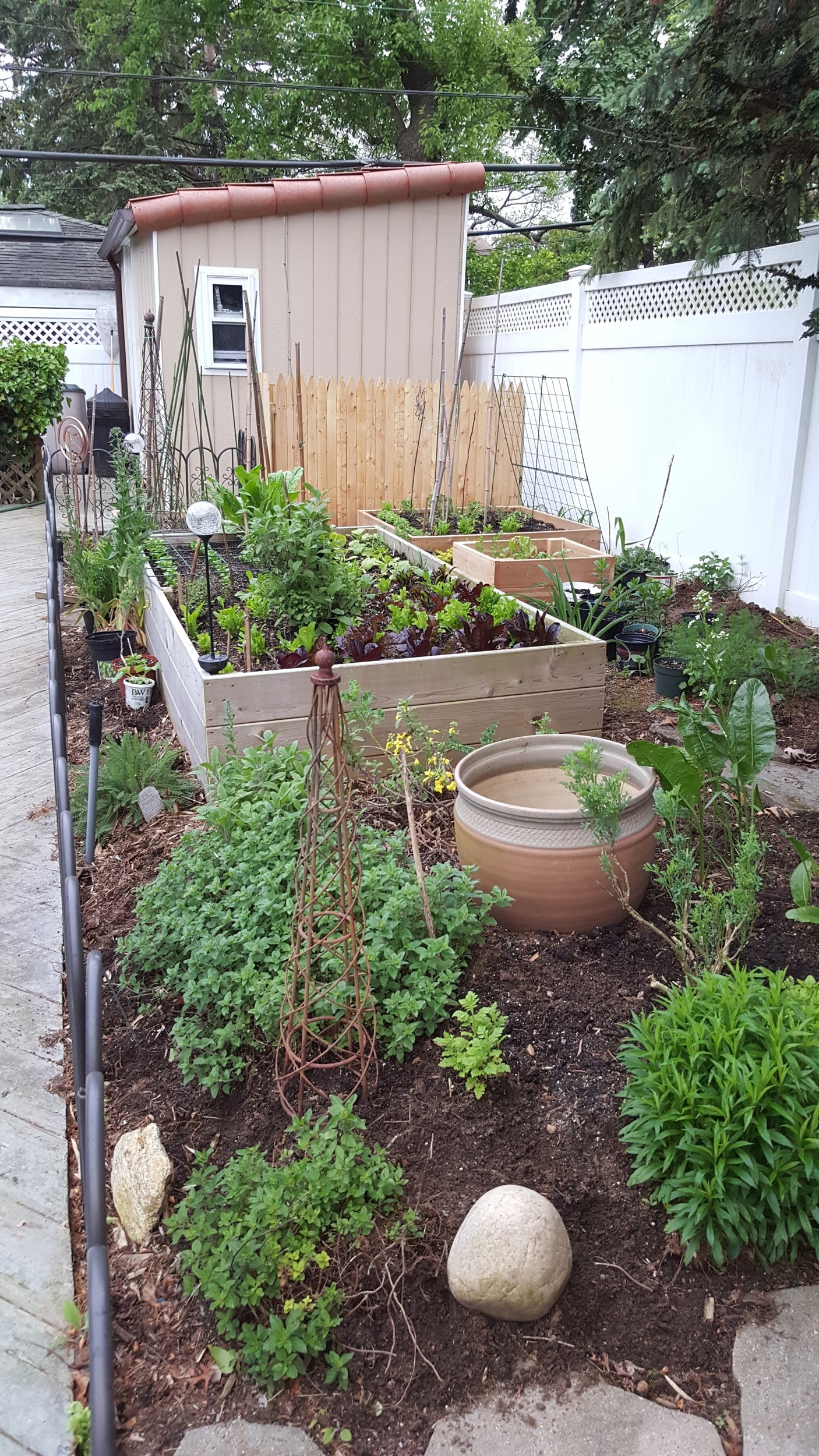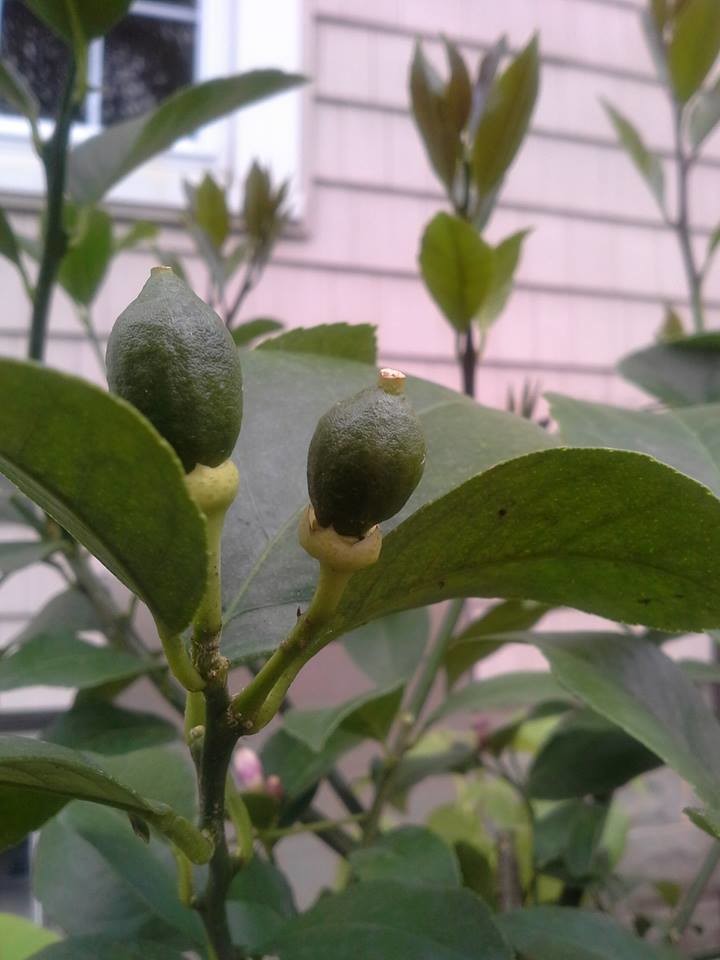How does your garden grow?
Unique plots in Valley Stream are thriving

At the height of the growing season, expert and novice local gardeners are challenging expectations of what Long Island gardens look like, combining innovative techniques and exotic plants with a passion for getting dirt under their fingernails.
Guy Jacob, who retired from his longtime teaching position at the Wheeler Avenue School last month, worked with his students last year to create a school garden that features plants native to Long Island. He also boasts a National Wildlife Federation-certified habitat in his backyard.
The designation requires that the habitat contain natural food sources for wildlife (including a water source), shelter from bad weather, places to raise their young and natural, sustainable treatment of the soil, air and water.
“I’m dead-set against using any kind of harmful pesticides — you’re ingesting it,” Jacob said. “It’s not something that I use. I try to go as natural as possible.”
He also incorporates vegetables into his summer planting, which he said is better than store-bought produce. “If you don’t use [a store-bought vegetable] straight away, it rots,” Jacob said. “By you growing it in your own backyard, you can pick what you want for that particular meal, without worrying about the rest of it rotting to hell. You know what you’re eating, and it’s the resource from your own space.”
For the first time this year, Jacob planted tomato seeds he received from a family member from Italy. They yield generations-old heirloom tomatoes, which he prefers to “something that’s mass-produced by Home Depot.”
Starting small
Resident Kara Hillenbrand enjoyed some success last summer, so she’s going bigger this year. “Oh, there’s nothing much to my garden,” she said. “It’s a 4-by-8 garden. I’m a beginner, and my husband and I enjoyed the tomatoes and strawberries I grew last year, so this year I expanded my assortment.”
She added lavender, mint, cayenne peppers, string beans and three different types of potatoes.
“Last year was the second year in our house,” she said. “The first year, we worked on the lawn and flower beds and just keeping up with it all. The second year we did tomatoes and strawberries in pots … [W]e’ll be starting to grow edible flowers, plant the blueberry and blackberry bushes we have in pots, and some flowers to hopefully attract butterflies and hummingbirds.”
Resident Tom Chen didn’t try planting anything new this season. He has five beds and a climbing rack for cucumbers in his garden. Bok choy, or Chinese cabbage, is a vegetable he grows annually.
“They’re pretty hardy,” he said. “Doesn’t take too much to maintain them.”
Depending on preference, he said. they could be harvested early, as baby bok choy, which will yield more of a crop. Letting them reach full size takes longer and requires more space, which yields less. “For the beds that I have, I could probably yield at least a month’s worth of bok choy,” Chen said.
Barbara Parnell said that one of the reasons she started gardening was to teach her four children about how food is grown and to produce her own organic food. Her son Timmy, 14, took a great interest in it early on, and helps carefully plan what to plant each year.
“He’s always looking for different varieties of plants and new things to grow,” Parnell said. “He doesn’t mind weeding, and loves to check each day to see what’s ready to pick. He has truly developed a love of gardening.”
Some of the more unusual things Parnell is growing this season include cabernet franc grapes, vanilla, ginger, turmeric, avocado and lemons with a pink flesh. In the winter she brings the lemon and lime trees, ginger, avocado, turmeric and vanilla plants inside, and returns them to the yard in the spring.
“I find that pumpkins, tomatoes, cucumber, different varieties of squash, garlic, onions, lettuces — spinach, arugula, kale — and potatoes do very well in this climate,” she said. “Most salad greens love the cool weather and are perfect for early spring and fall planting.”
Parnell’s garden enables her family to make salads from the greens, but she has also made ice cream using the mint, potato salads, assorted roasted vegetables, tomato tarts and a baked vegetable dish called tian.
“I’ve been gardening for about six to seven years,” she said, adding that although she didn’t have a garden growing up, she now considers it a great family project. “I get to spend quality time with one of my boys, we eat delicious, fresh food and we have a wider variety of veggies than one would typically find in a supermarket,” Parnell said. “There’s a great sense of satisfaction when I go out and harvest something we have grown.”
Gardening behind the store
Nat Patel’s backyard on Rockaway Avenue is paved, but that doesn’t stop him from gardening. He owns the Valley Grocery Mart convenience store, next to Ancona Pizzeria and Restaurant, and lives in the apartment upstairs. Behind the store is a small, concrete parking area that he has transformed into a miniature farm by planting vegetables, fruit and herbs in makeshift beds made from plastic 50-gallon drums, which he documents on his YouTube channel.
Patel started gardening about six years ago, he said, with basic houseplants. Over time he began to see the financial value of growing his own food, and he enjoyed doing it.
“A lot of people don’t know how much you can do with a small space,” he said. His plants include zucchini, squash, kidney beans, cilantro and radishes. “It brings a lot of bees,” he added, noting their importance to the ecosystem.
He now has close to 60 drums, cut horizontally or vertically, in the space. “It’s working well,” Patel said. “I can move it if I have a season off, or if I want to use the backyard differently.”
His summer crops help feed his family of four “quite a lot,” and whatever leftovers he has he donates or gives to neighbors. “If everybody grows something in their backyard with two, three, four buckets, or beds … It would make the town healthy, and it will make it more economical,” Patel said.
A trustee with a green thumb
Village Trustee Vincent Grasso’s garden includes a variety of crops most people wouldn’t think to grow on Long Island, such as chickpeas, currants, shiitake mushrooms and red quinoa. The most recent additions are cranberries, bayberries, kiwi and Jerusalem artichokes.
Grasso developed a passion for permaculture, or self-sufficient agricultural ecosystems, when he was exposed to it in Afghanistan during his 2014 deployment with the Navy. “People think of Afghanistan as a complete wasteland,” he said. “Well it wasn’t. For many years it was a very strong agricultural country.”
Grasso was intrigued by a network of underground irrigation systems that were once used to transport water from high elevation to lower ground to prevent it from evaporating. The innovative underground channel, known as a karez, piqued his interest in building a “system that supports itself.” When he returned, he and his wife, Mary, began transforming their front yard into an agricultural ecosystem designed to minimize waste and yield food year-round.
“The whole concept out here is twofold,” he said. “Not only is it gardening, but it’s landscaping.”
In addition to providing a lush aesthetic, many of his plants serve other purposes. Chicory, a perennial weed, doesn’t require much maintenance, and its roots plunge deep down into the soil, improving access to buried nutrients and the overall health of the topsoil. Its flowers attract pollinating insects and its leaves, although bitter tasting, can be used in salads or as a garnish. Grasso also grinds up chicory roots into a powder and uses it as a coffee substitute.
The Grassos employ three techniques in their mini-ecosystem: Hügelkultur, a German technique of making raised beds out of rotting wood; bioswales, which trap rainwater with gravel to keep the ground moist and fertile; and traditional sheet mulch.
When Grasso first began ripping up his yard to start the project, it raised a few eyebrows among his neighbors. “They thought we were burying pets in the front yard,” he said.
They’ve since come to appreciate what he’s done, and Grasso said the garden is currently the most abundant it has ever been. Of particular interest to his El Salvadoran neighbors is an herb spiral he created to nurture a microclimate of plants like mint, rosemary, thyme, sage, tarragon and chives. He offers mint, a common ingredient in El Salvadoran cooking, to his neighbors frequently. The spiral configuration situates plants that thrive in hot, dry weather at the top, and plants that require partial shade and more moisture at the bottom. Rainwater travels down the spiral and collects at the base.
Grasso’s watering technique is just as unconventional as his front yard garden, involving a 50-gallon drum of rainwater and some goldfish. “We’ve never turned our hose on,” he said. “We use the water that lands on our property and we capture it.”
Rainwater from his home’s gutters is funneled into large barrels of water. Several goldfish inside eat mosquito larvae. The fish have about a one-year lifespan, according to Grasso, after which time they become “extra fertilizer.”
He acknowledged that not everyone shares his interest in permaculture. “We have a level of fanaticism, obviously,” he said. “People aren’t going to plant rows of corn.”
Mary interjected: “Although we’ve done that too.”









